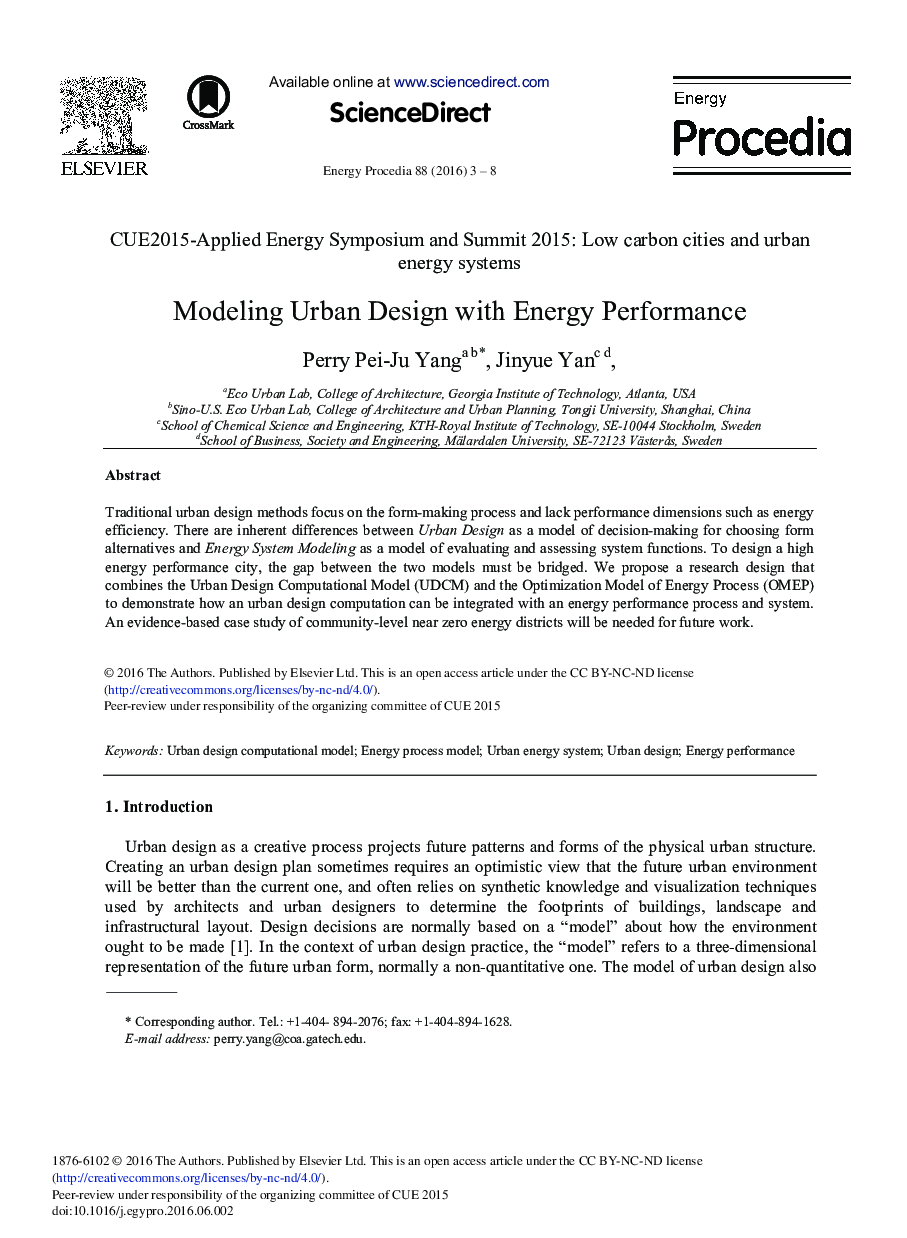| Article ID | Journal | Published Year | Pages | File Type |
|---|---|---|---|---|
| 1508775 | Energy Procedia | 2016 | 6 Pages |
Traditional urban design methods focus on the form-making process and lack performance dimensions such as energy efficiency. There are inherent differences between Urban Design as a model of decision-making for choosing form alternatives and Energy System Modeling as a model of evaluating and assessing system functions. To design a high energy performance city, the gap between the two models must be bridged. We propose a research design that combines the Urban Design Computational Model (UDCM) and the Optimization Model of Energy Process (OMEP) to demonstrate how an urban design computation can be integrated with an energy performance process and system. An evidence-based case study of community-level near zero energy districts will be needed for future work.
